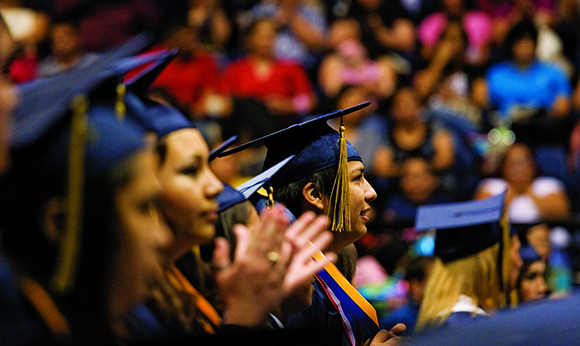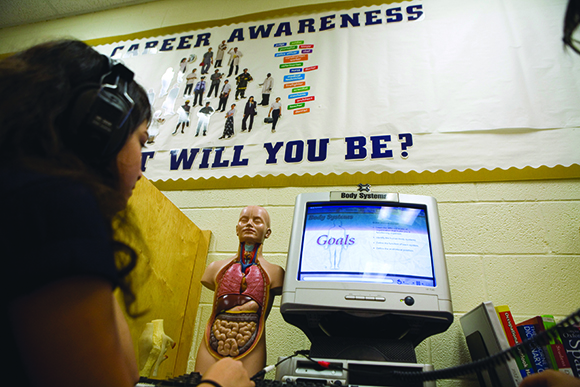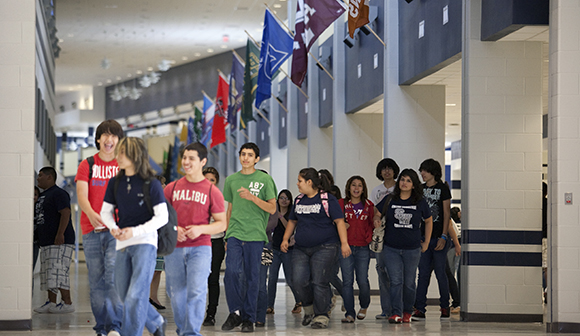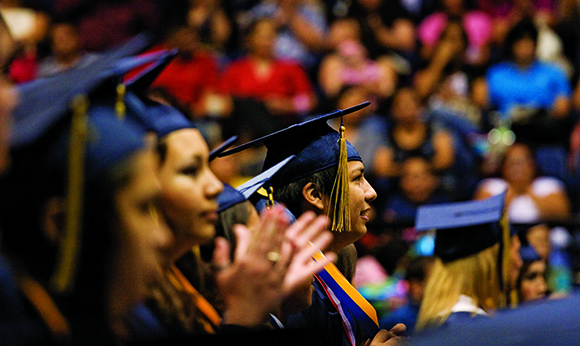
Joel Vargas & Hannah Smith, Jobs for the Future
Hack: a clever solution to a tricky problem
There is good news and bad news about today’s high school students. The good news is that more students are finishing high school. Graduation rates have increased over four years to a high of 82 percent in the 2013-14 school year. And as college credentials have increasingly become a necessity for getting onto a career path with good wages, high school graduates get the message. Aside from a few dips during economic recessions, the percentage of high school graduates who go onto college has trended up over several decades.
The bad news is that while many students take the step to start at a two-year or four-year college, too many stumble before finishing. Of those who go to college, a large number–and a disproportionate share from low-income families start in remedial courses and fail to ever advance into college-level work.
This is not about students’ lack of motivation or merit. The problem is that high schools are not preparing them for an economy that demands workers with more education, skills, and knowledge. Policymakers have largely tried to fix this by strengthening standards, curricula, and assessments to align what is learned within schools to what colleges and employers expect graduates to know. These are foundational efforts that should lead to large-scale improvements over time.

But we can also strengthen high schools now, borrowing lessons from innovative educators and students who have found an interesting hack for improving college and career outcomes. They are blending the high school experience with college and career, removing walls and boundaries between compulsory schooling and the next steps in learning and work.
Early college high schools, for example, use a blended approach and have produced incredible results. Early college students receive support to complete up to two years of college credit and earn an associate’s degree as part of the high school curriculum. There are over 280 such schools around the country serving largely low-income and first generation college students, and many of the schools are located on college campuses. Rigorous research shows that early college schools ensure that more students finish high school and start and complete college credentials, including the roughly 30 percent who finish an associate’s degree along with their high school diploma.
One of the reasons that early college works so well is that through the introduction to the postsecondary system, students have a structured, safe, and sanctioned testing ground to explore their limits. Developmentally, the time during and following high school can be fraught with uncertainty about one’s path and identity. Through an early college experience, students are given the support and license they need to experiment, develop, and practice the academic habits and social norms that are integral to success in college (e.g., study skills, ability to manage one’s own learning, knowing how and when to seek help from adults, navigating the financial aid system). The schools create an environment of exposure, exploration, academic rigor, and authentic rehearsal for a possible future self.
The same logic applies to schools trying a similar but different blending of college, career, and high school. In Linked Learning, high school students engage in work-based learning and take sequences of career and technical courses that prepare students for college and career, including college-level courses. Exposure here is also a key to student success. In addition to opportunities to take college courses, students in these high quality pathways are given the chance to apply what they learn in school and deepen academic and workplace skills in real-life work situations through internships, job shadows, and other work-based learning experiences.

The Wonderful Company is supporting and promoting practices consistent with early college and Linked Learning in the Central Valley of California. Several schools have created pathways in agricultural business management, plant science, and mechanics–all preparing students for four-year colleges while enabling them to complete an associate’s degree by high school graduation or within one term after graduation. The schools are young, but the largely Latino, first-generation students that they serve are already showing early signs of strengthened academic achievement: at Wonderful College Prep Academy students are averaging two years of academic growth in one school year in English and math. The immersive experiences with college and career make the relevance of high school learning more evident to students and the rigor and ownership of what they learn are strengthened. As one of the school’s students says,
“This is a way different experience… Now I study about four to five hours a day for my high school and college classes.”
Turning to a more mature example, since 2004 Texas has supported the creation of 154 early college high schools throughout the state. One of the more notable efforts is in El Paso on the Mexican border where since 2009, over 1,100 early college graduates with associate’s degrees have entered the University of Texas El Paso (UTEP) as college juniors. There are so many students accelerating to bachelor’s degrees that UTEP has created special intake process and other support systems to pave the way for these young students toward future success. The early college high schools, El Paso Community College, and UTEP have clearly created a more supported, successful set of transitions for the community’s young people. One student nearing graduation says,
“…high school is a home base, and they helped me figure stuff out but also to take charge of myself. The first time, they helped us register for college classes, but after that it was, ‘ok, it’s how they do at college. You can do it yourself.'” (From forthcoming report by Nancy Hoffman of JFF.)
Schools that blend college and career with high school education offer youth the chance to take ownership over their life by creating conditions that are favorable to exposure and exploration, while simultaneously offering the academic rigor, supports, and guidance necessary to make informed decisions. It is time we acknowledged that preparation for life after high school cannot happen exclusively inside the walls of high school. Exposure and experience are crucial to ensuring the appropriate type of preparation, and the timing couldn’t be better for reforming the way our young people learn about themselves and shape their futures.
About “GenDIY”
eduInnovation and Getting Smart have partnered with The J.A. and Kathryn Albertson Family Foundation to produce a thought leadership campaign called Generation Do-It-Yourself (GenDIY)– how young people are hacking a pathway to a career they love – on The Huffington Post and GettingSmart.com. This campaign about reimagining secondary and postsecondary education and career skills will explore the new generation building a global economy and experiences that are impact driven and entrepreneurial. For more on GenDIY:
Buck the Quo by Living Your Passion & Choosing Your Own Path
Tell Your Story: Generation Do-It-Yourself Pathways for School & Career
Getting Smart Podcast | GenDIY: Emerging Options for Students Navigating Life
By Joel Vargas and Hannah Smith, Jobs for the Future. Follow Jobs For The Future on Twitter, @jfftweets.
— This feed and its contents are the property of The Huffington Post, and use is subject to our terms. It may be used for personal consumption, but may not be distributed on a website.
![]()

Source: Black Voices Huffington Post
Link: A Hack for Improving High School: Combine it With College and Career
